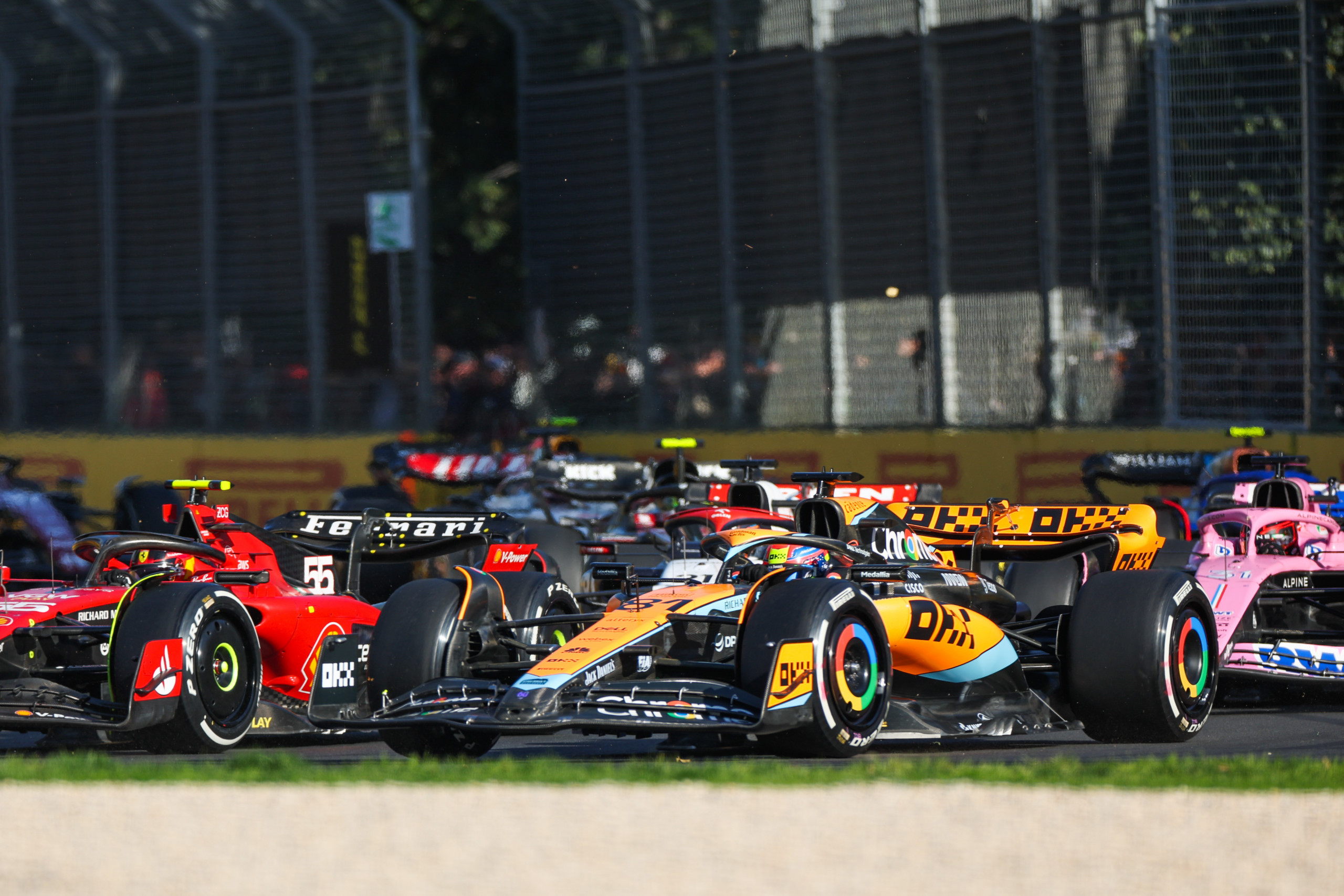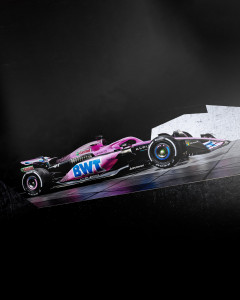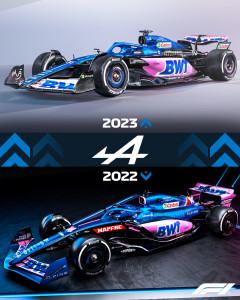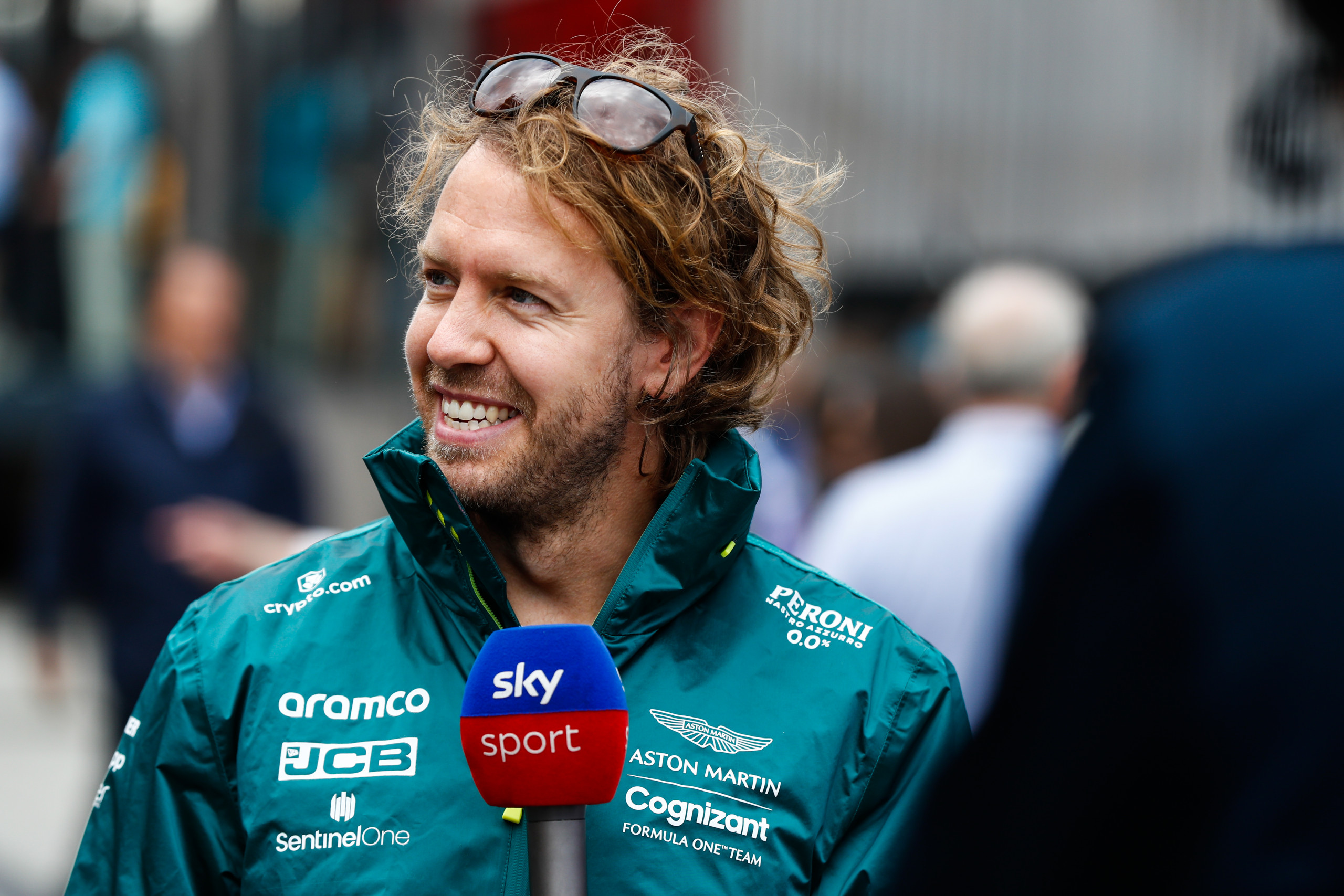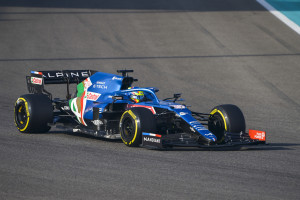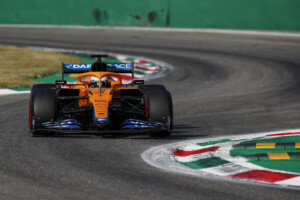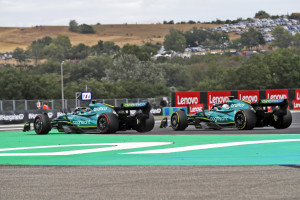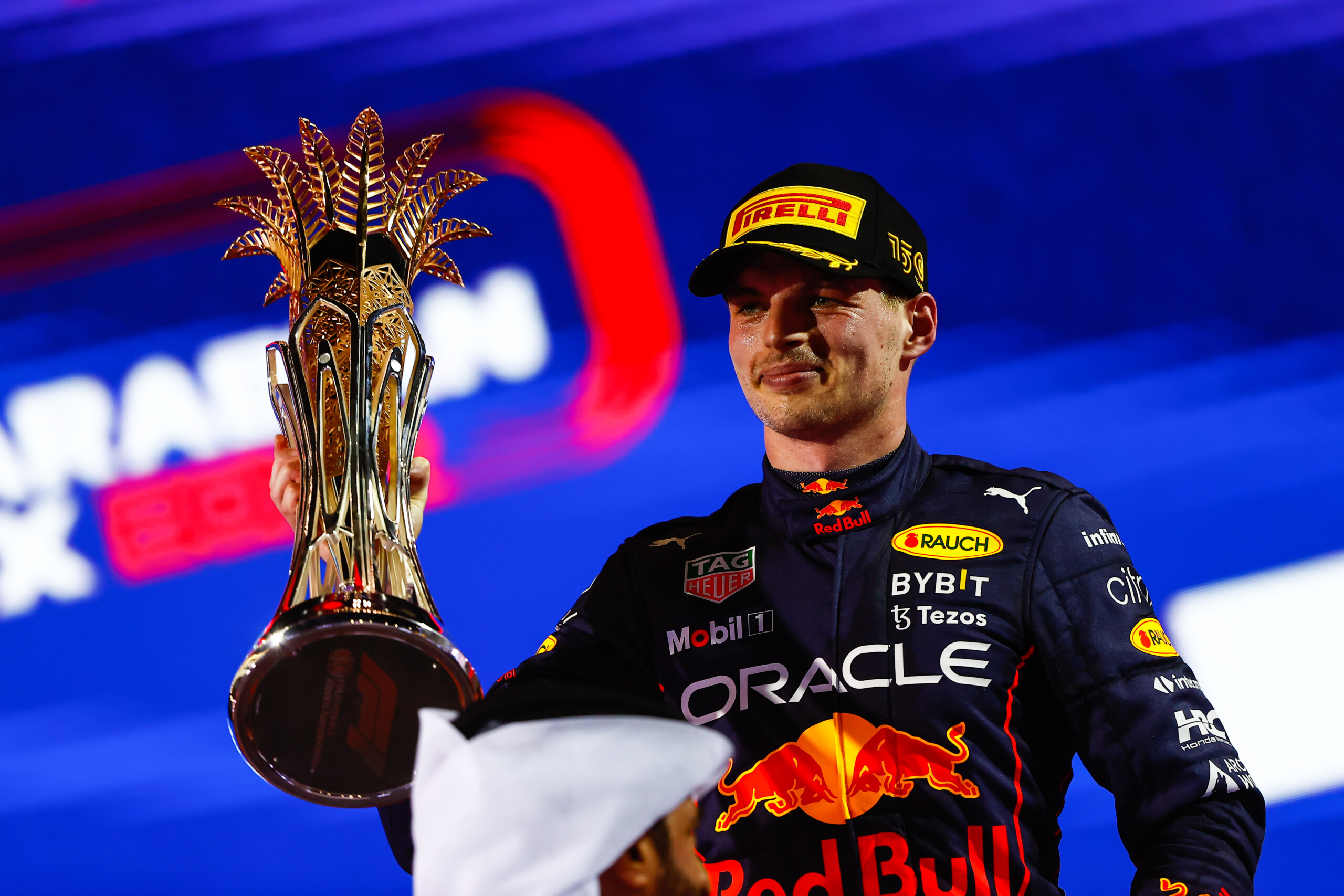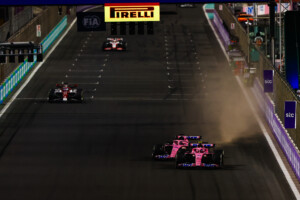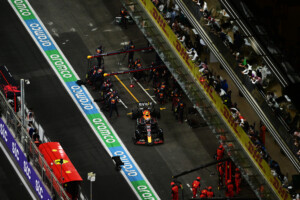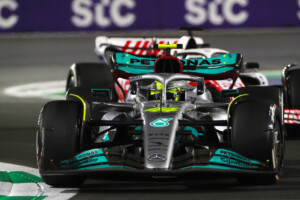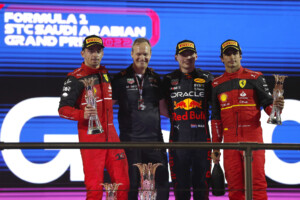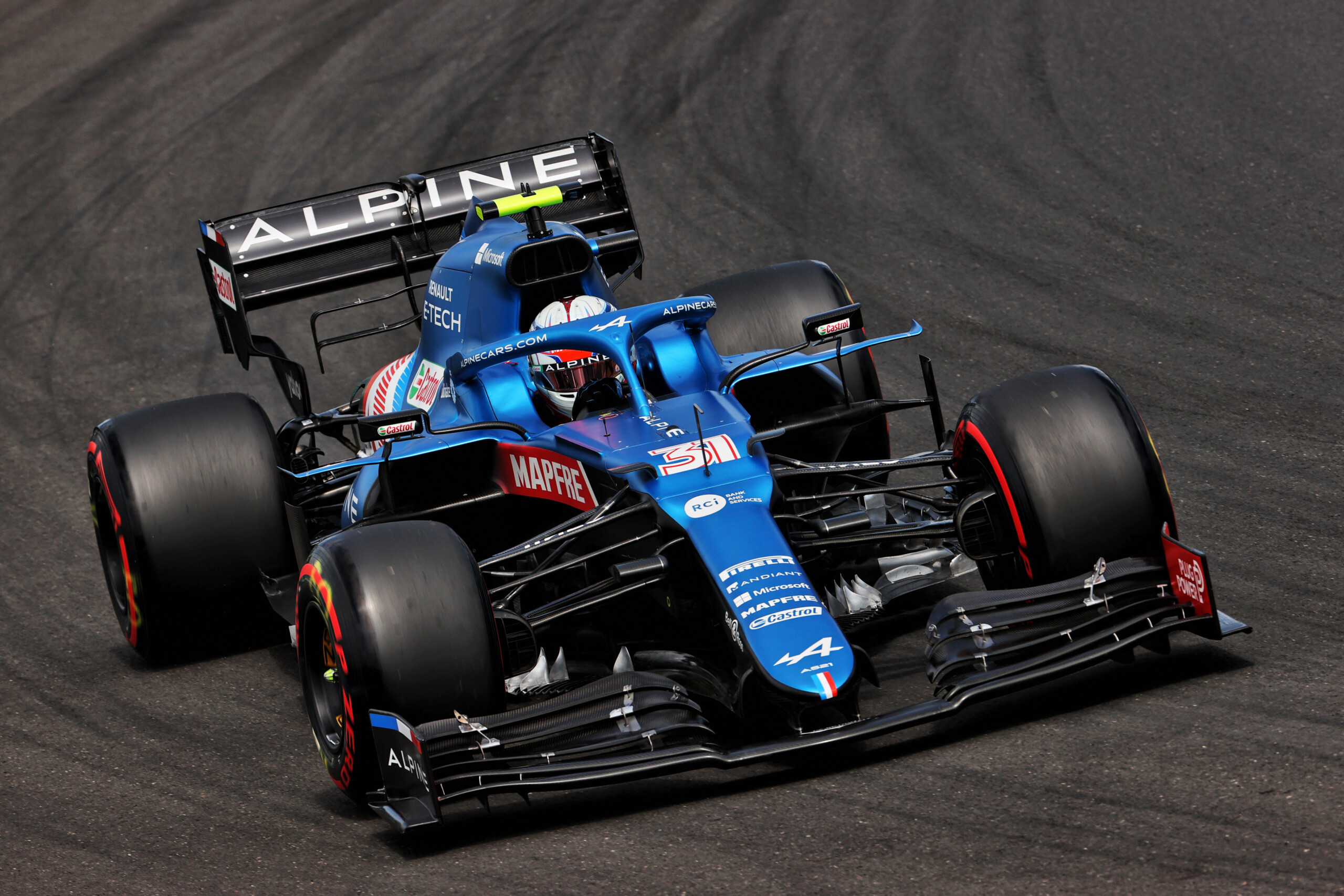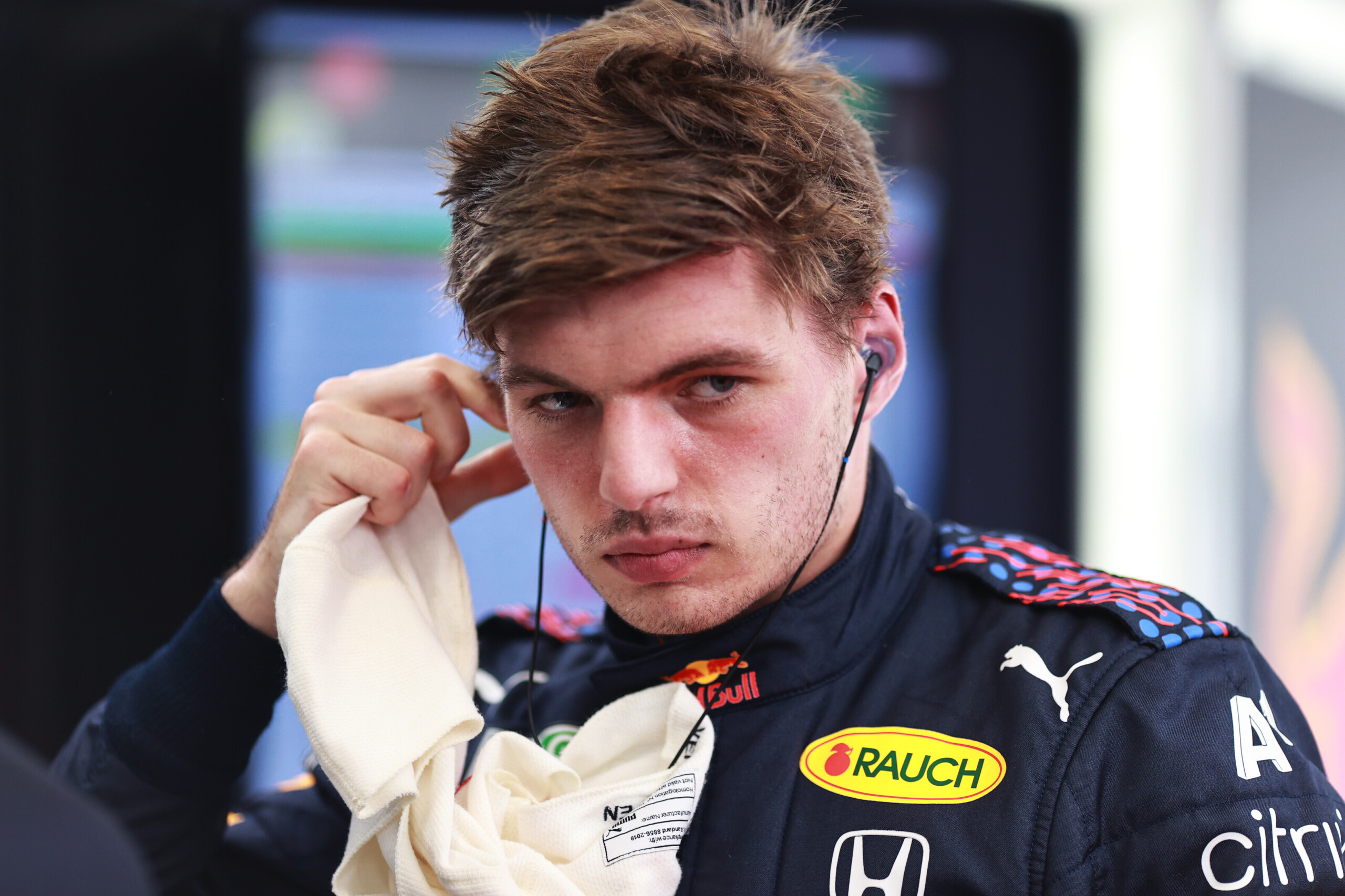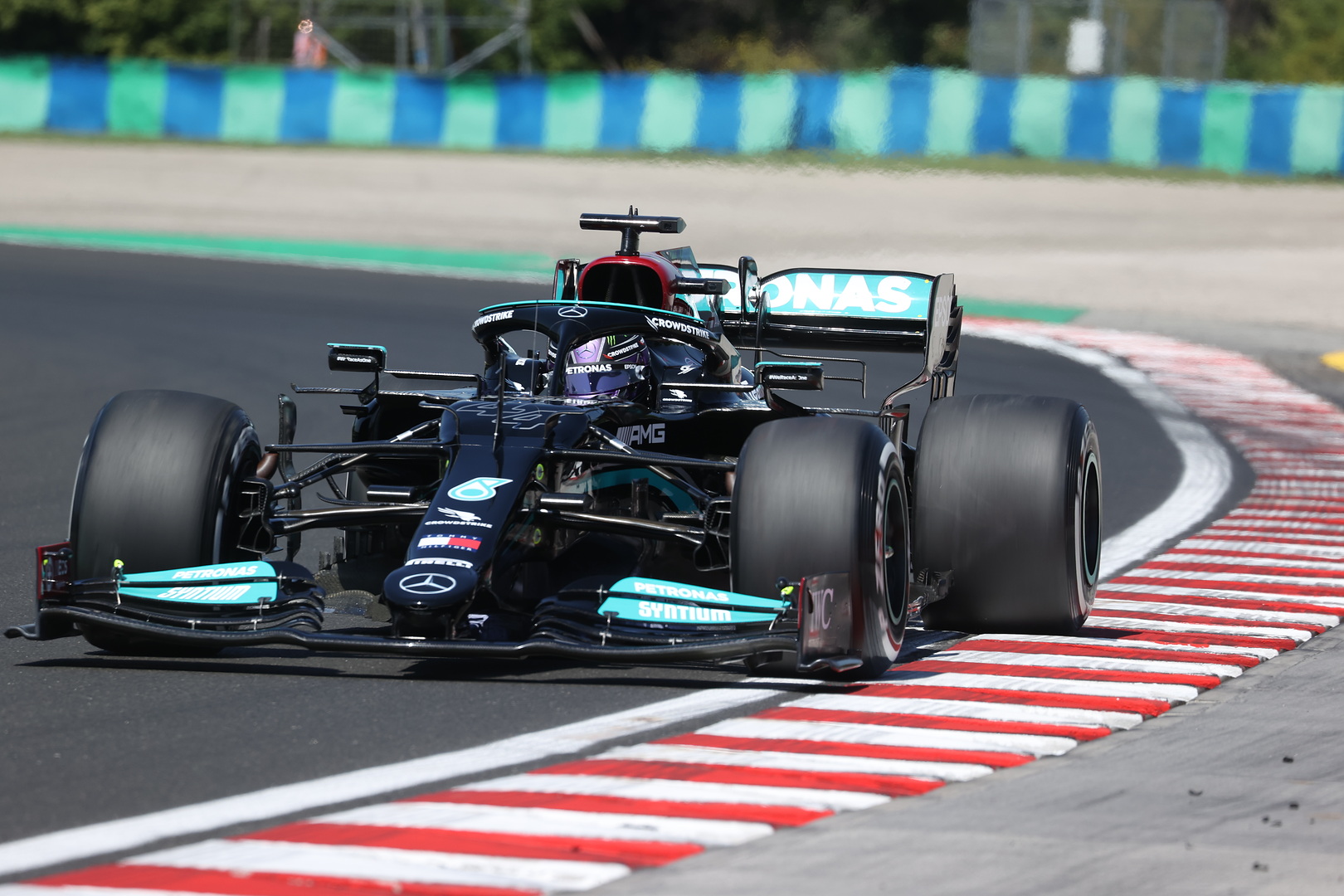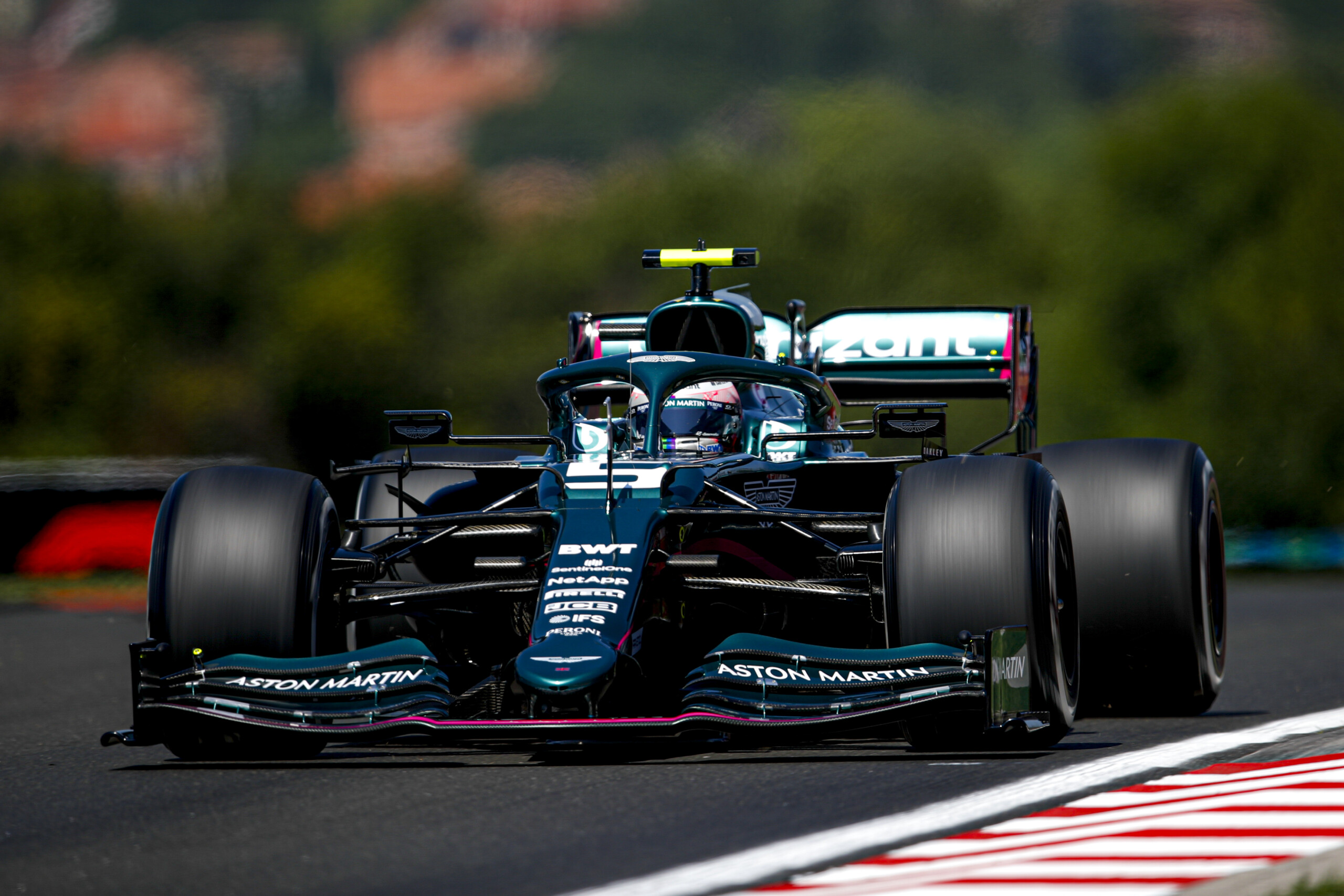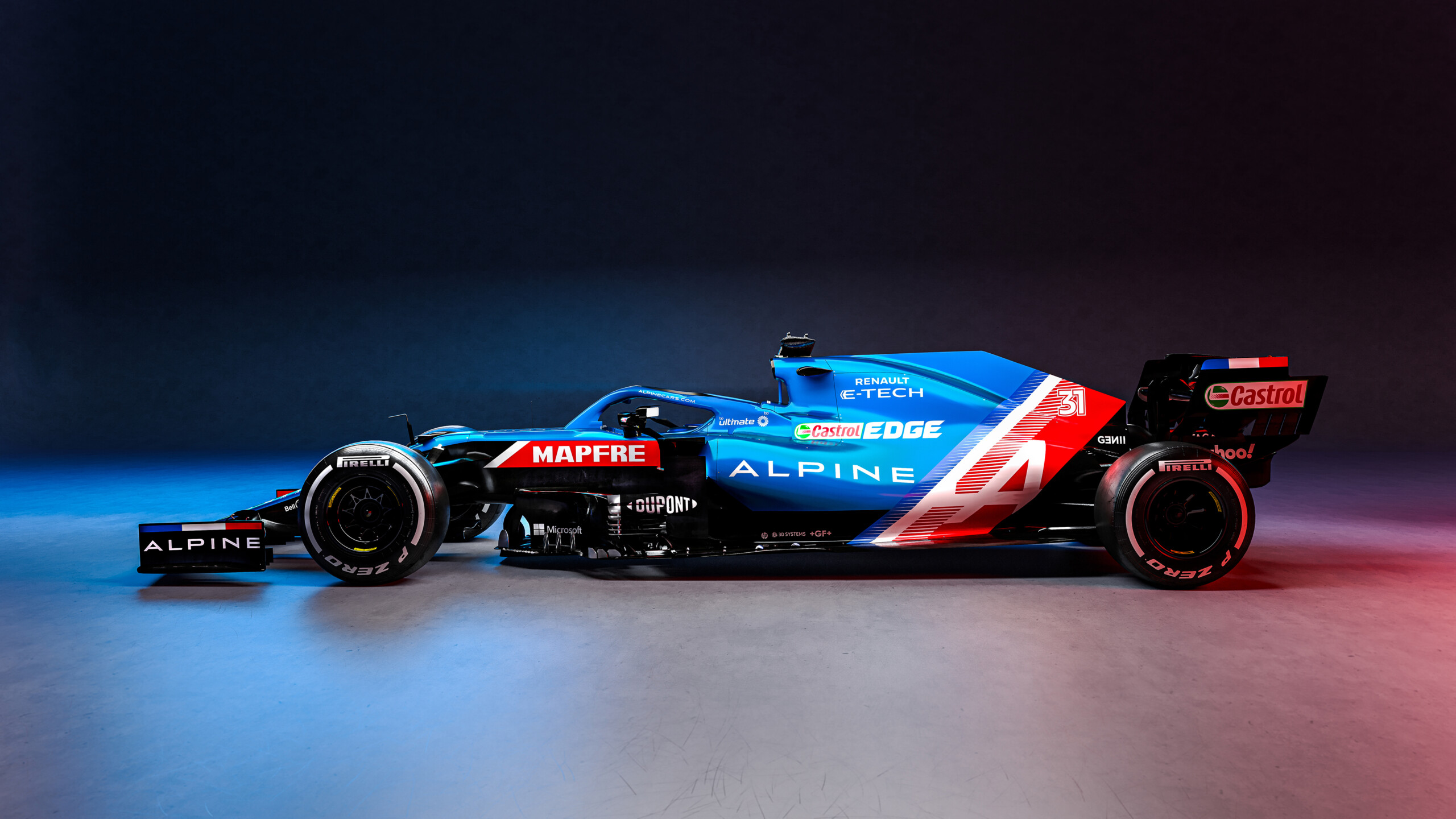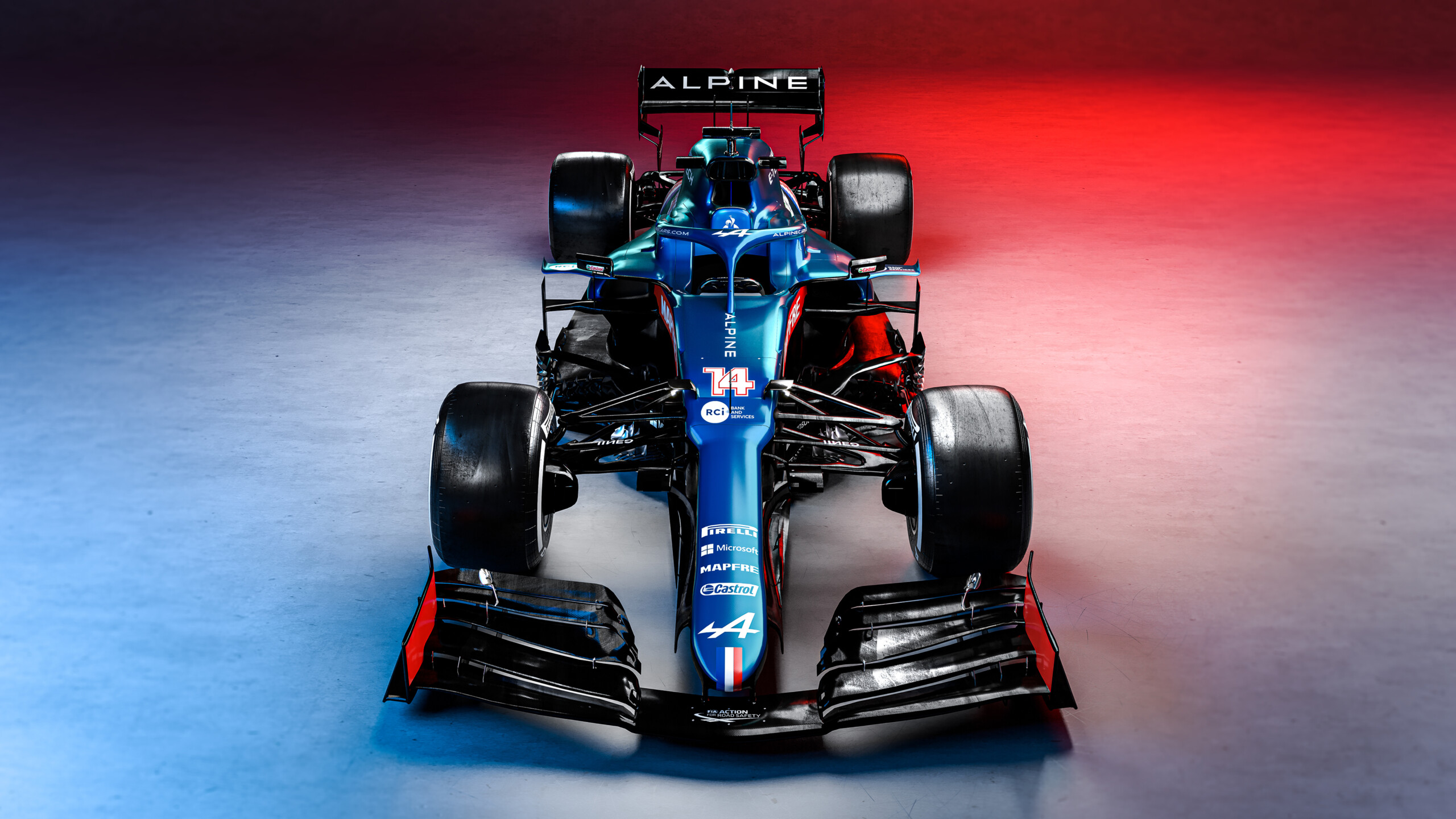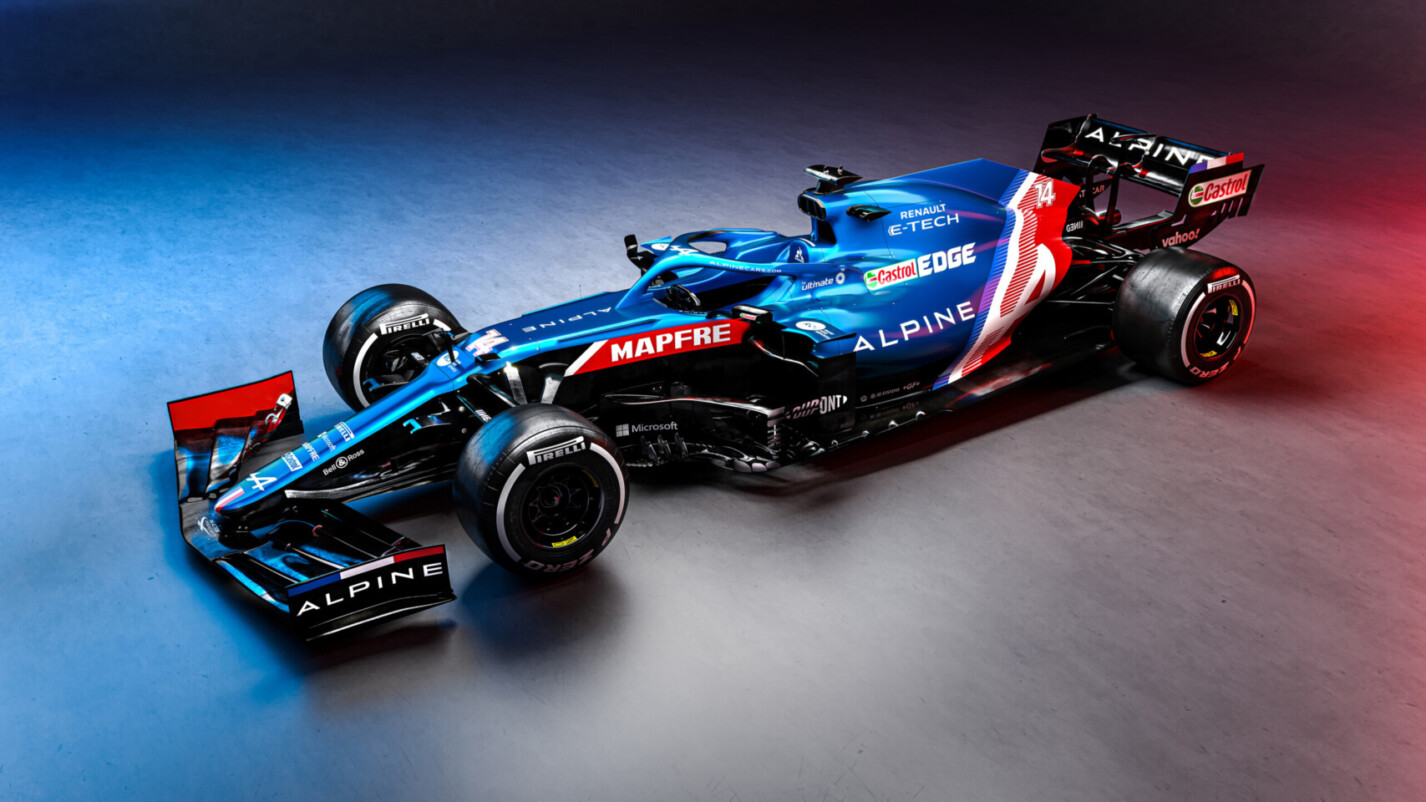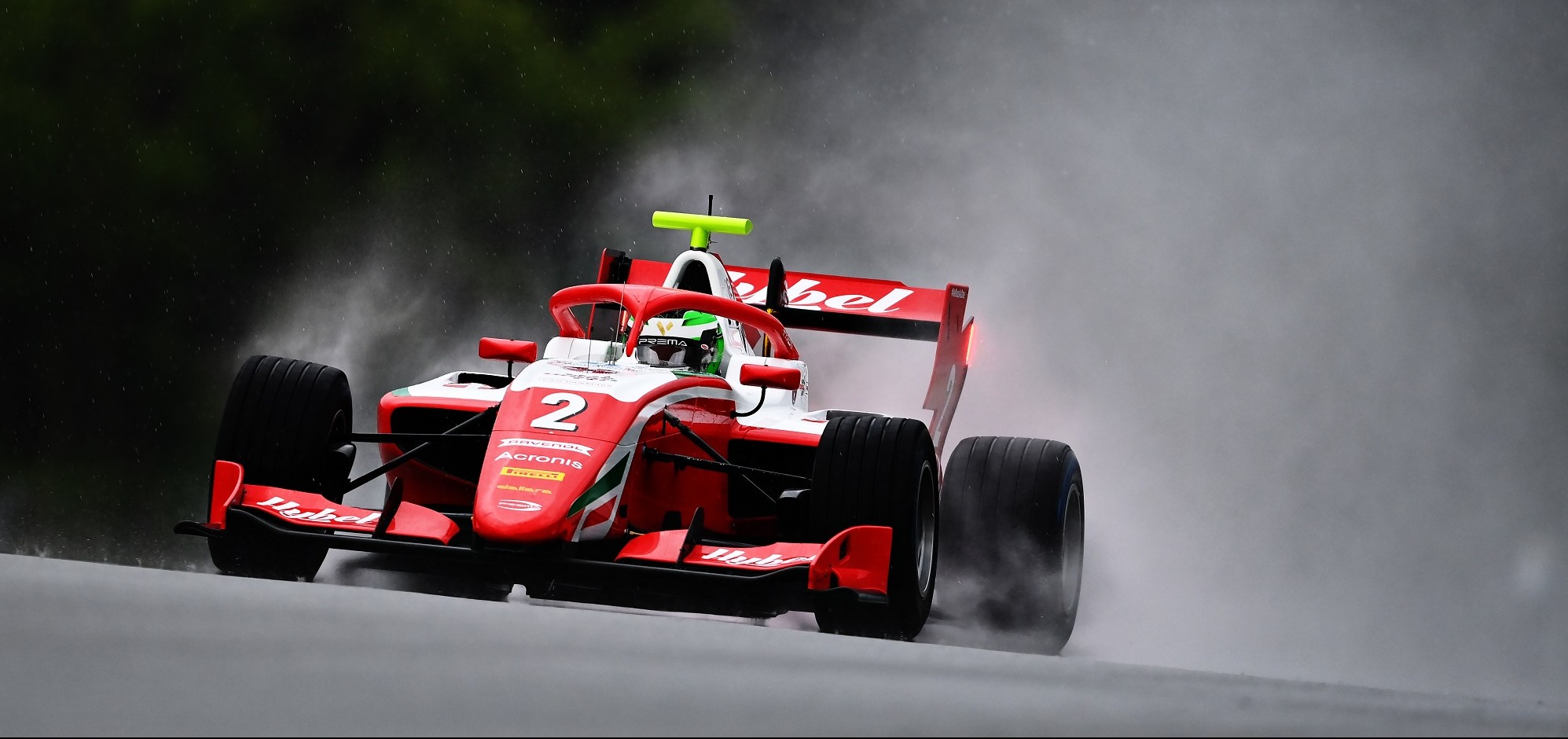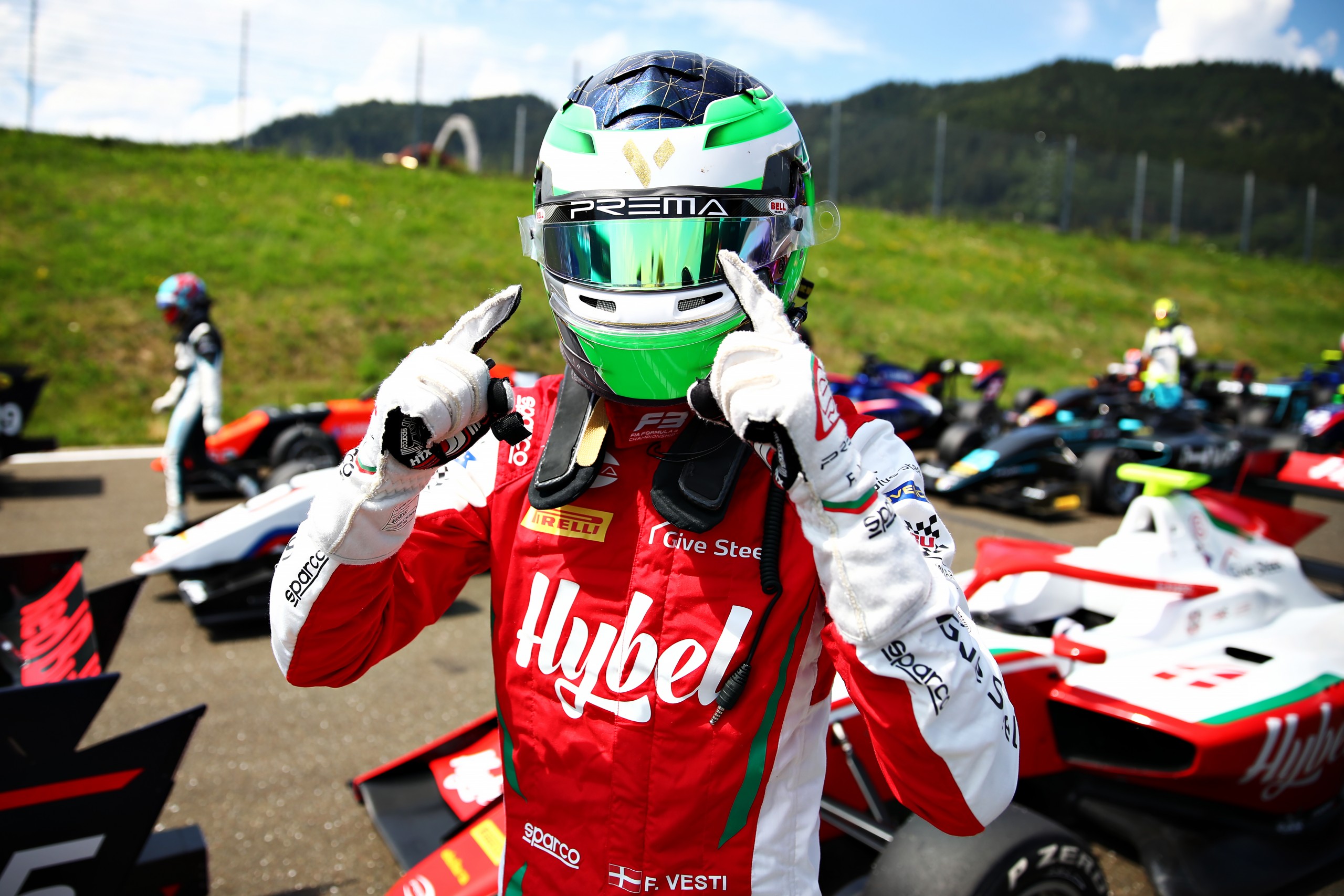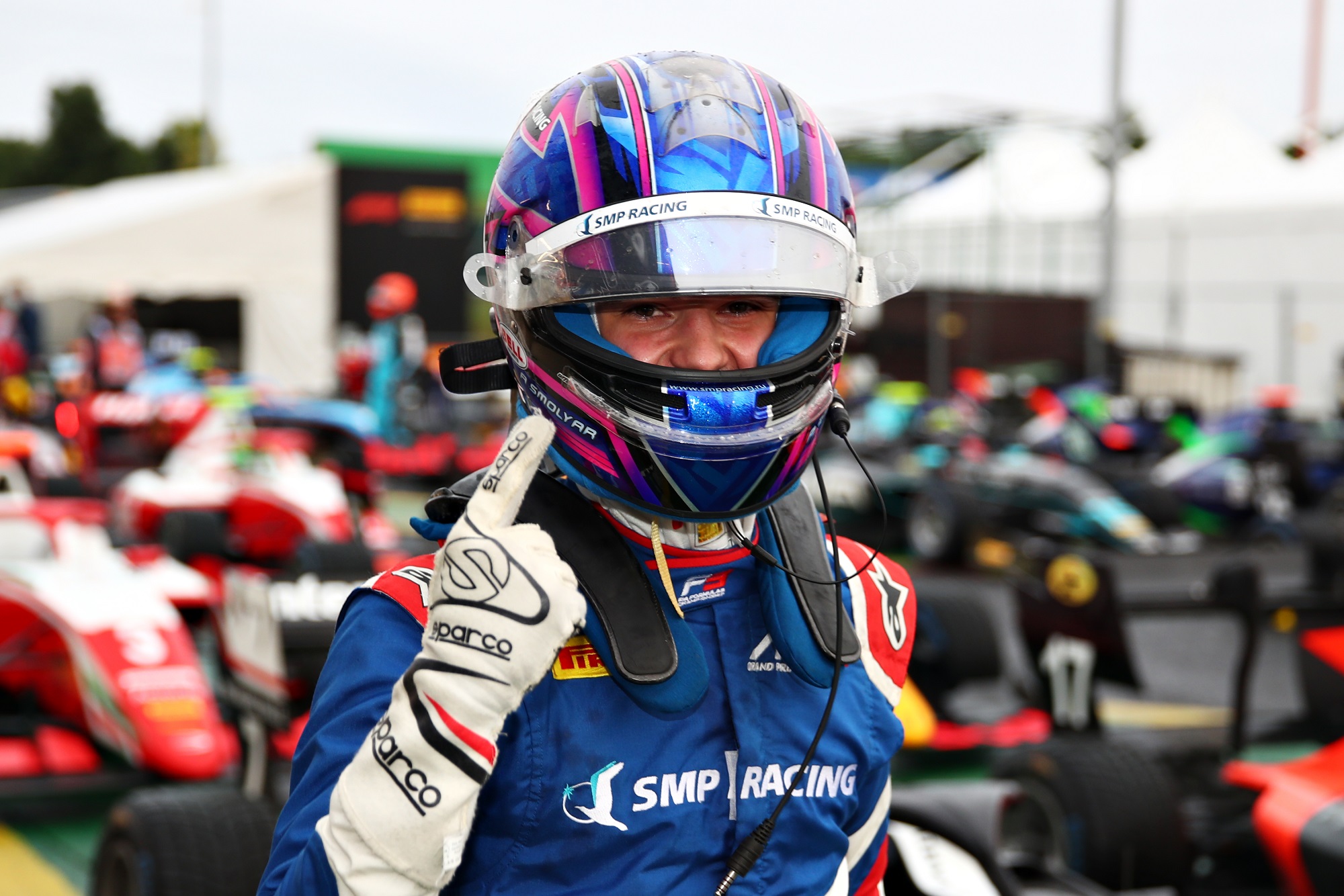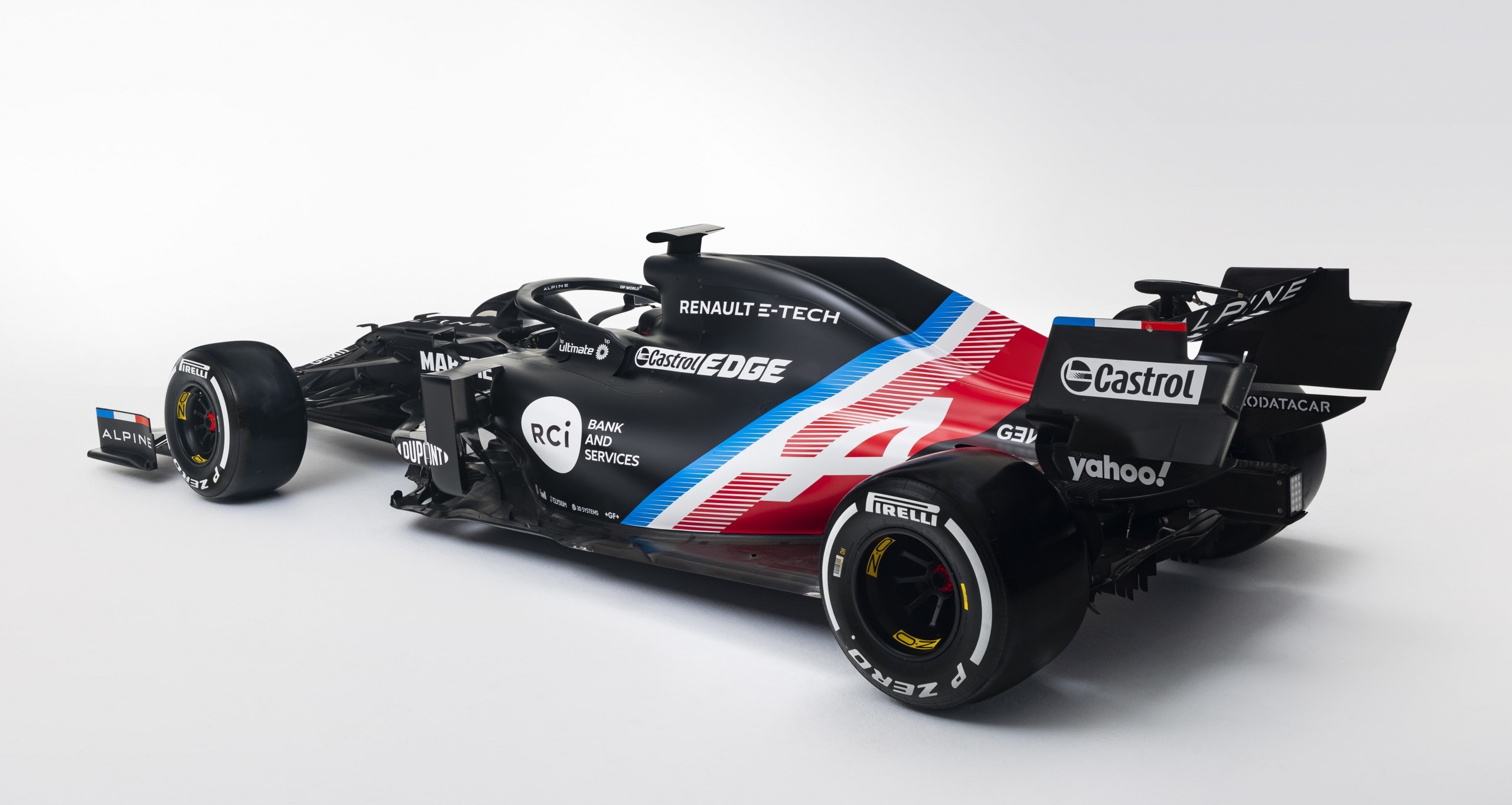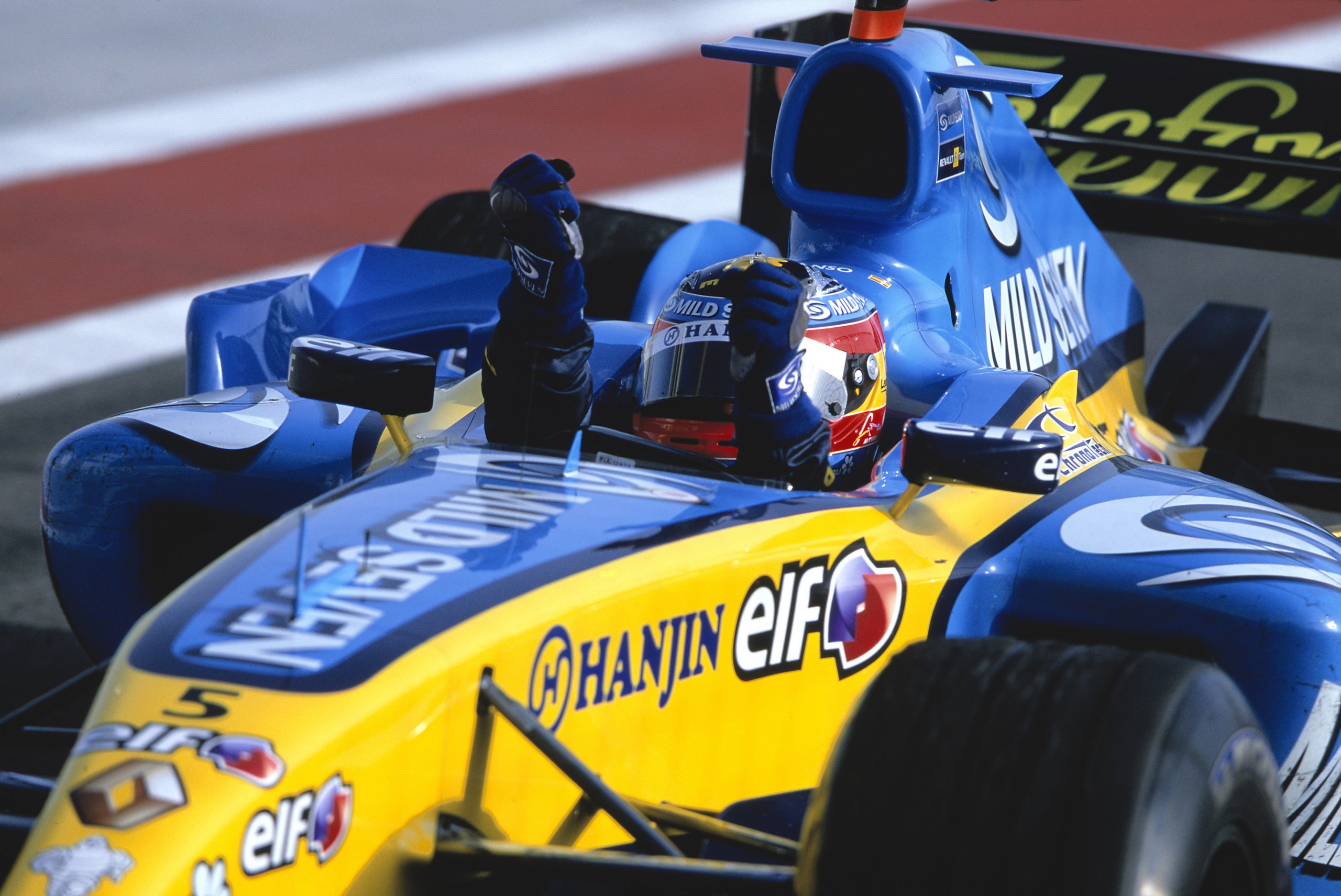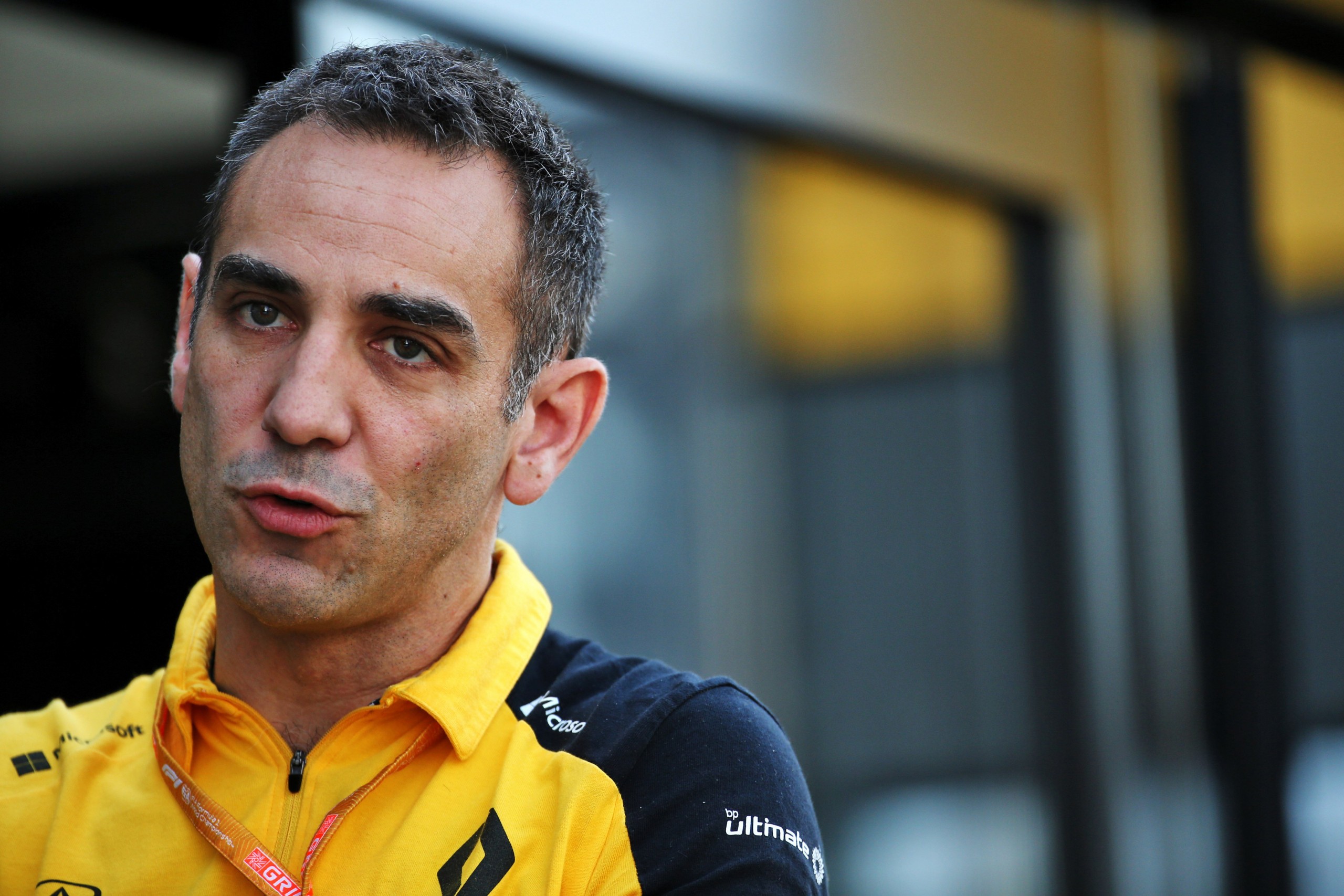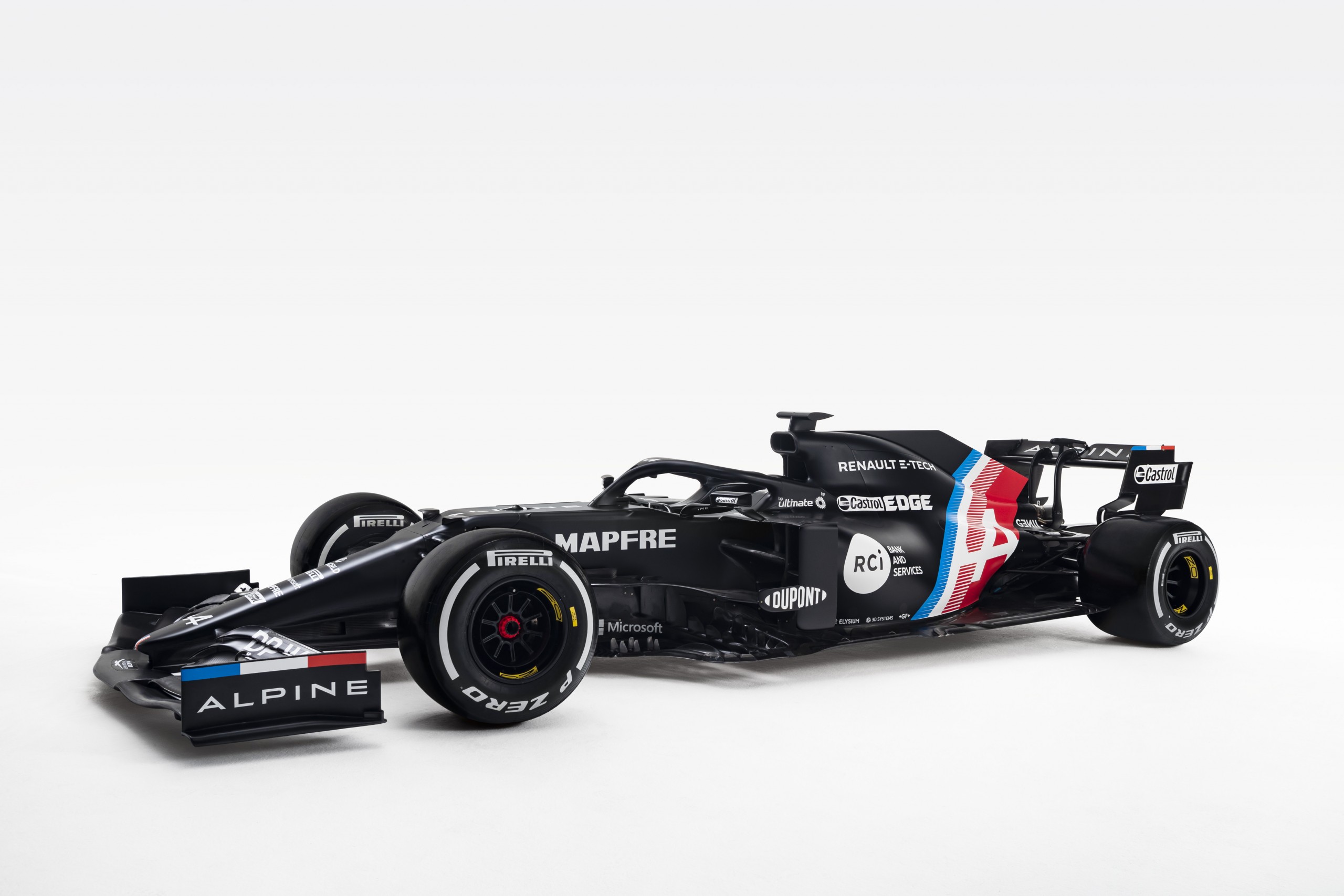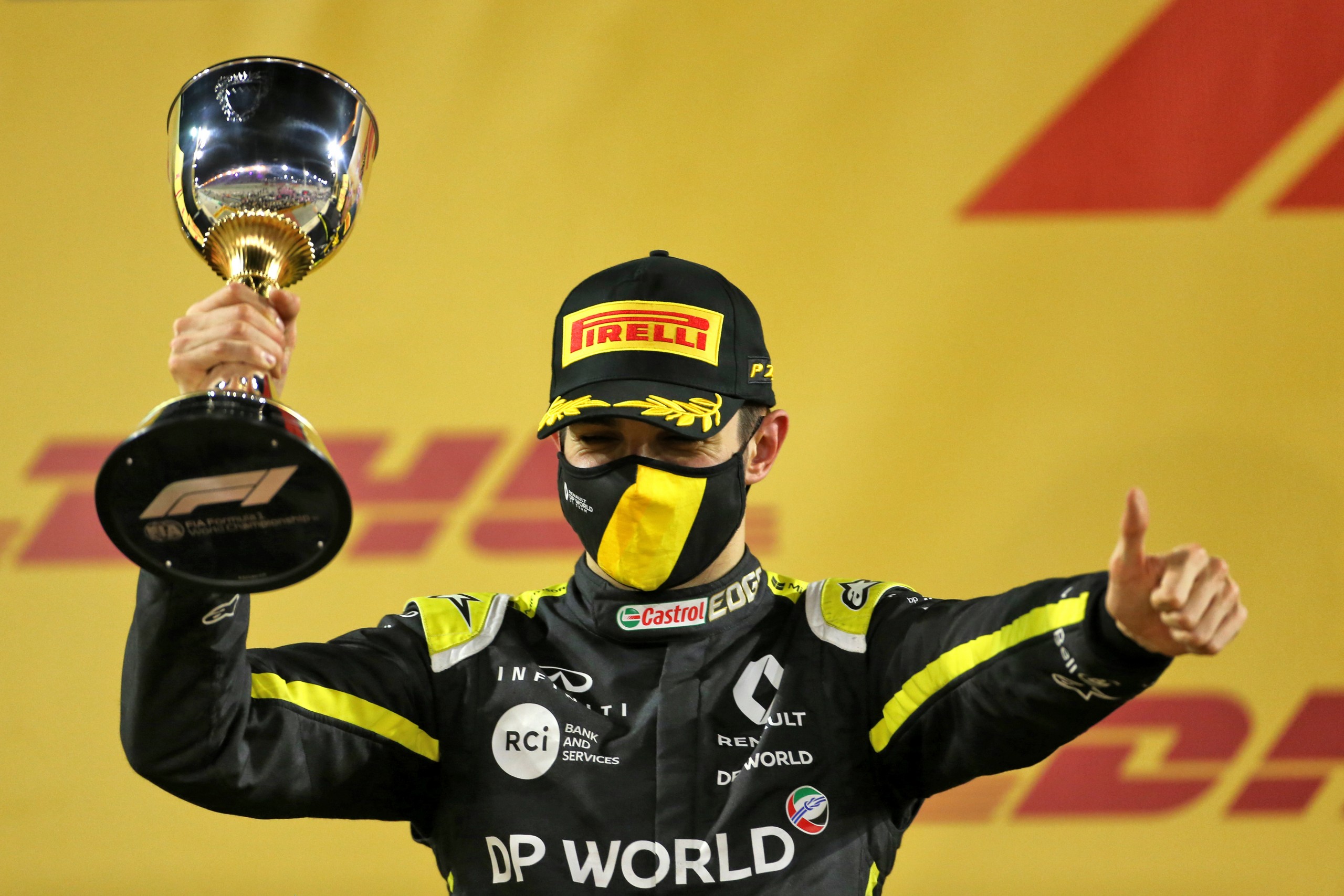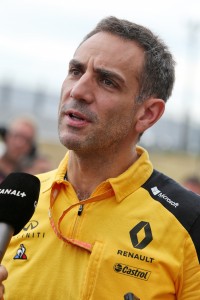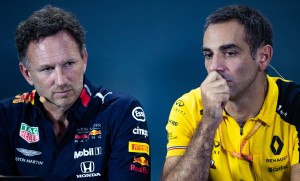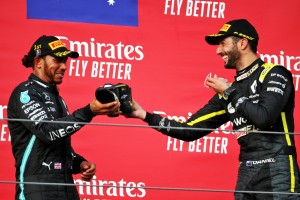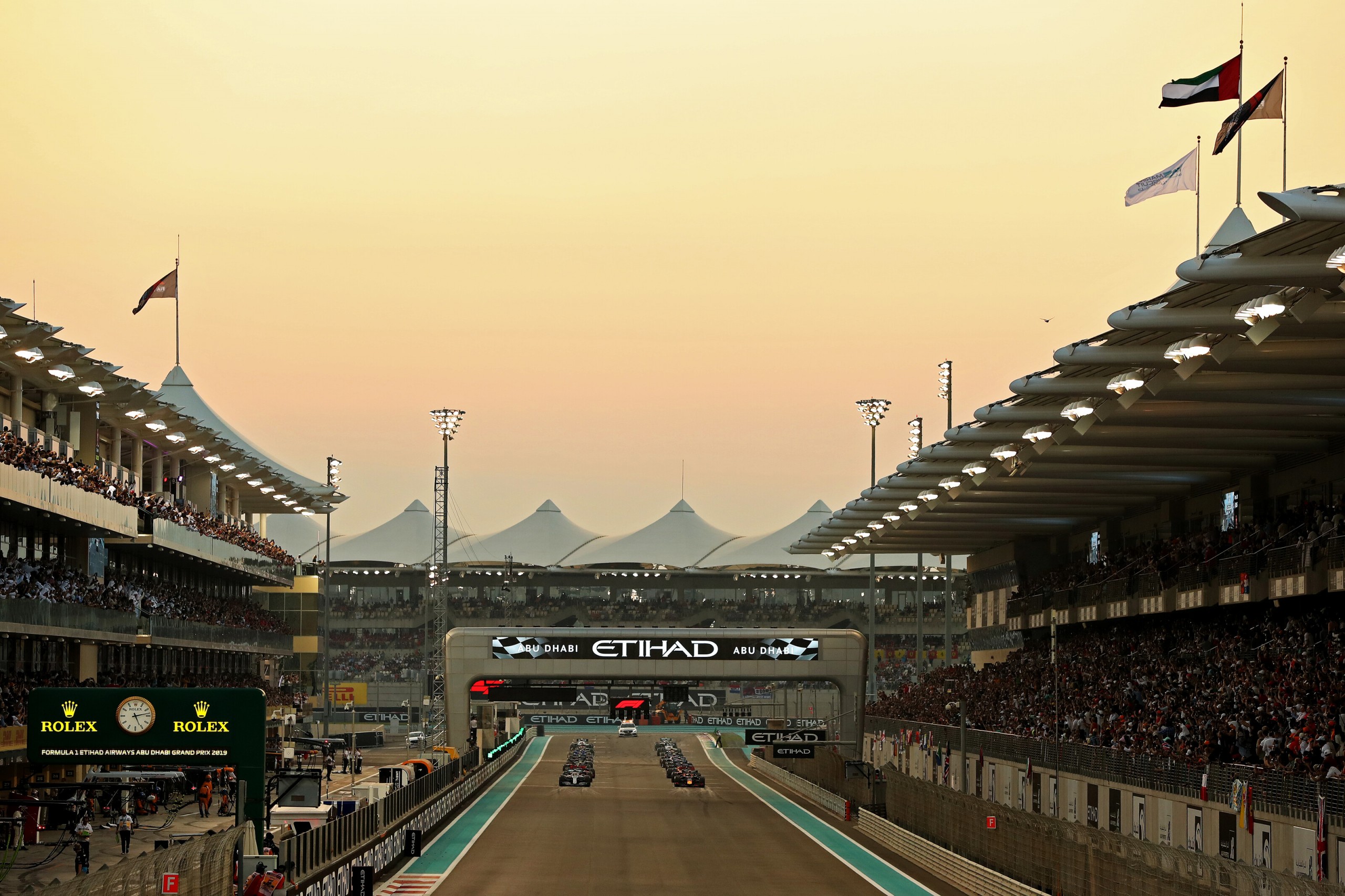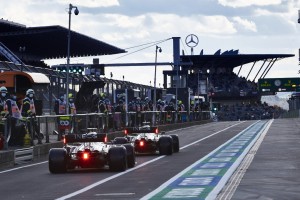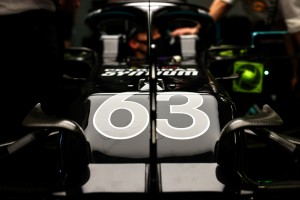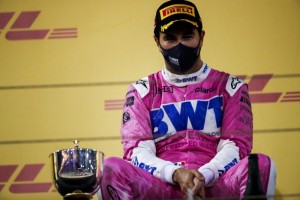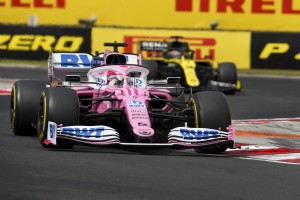Verstappen wins a chaotic Australian Grand Prix under very confusing circumstances. Hamilton finished P2 in a mixed day for the team while Alonso finished in P3 for the third time this season despite nearly being taken out of the race by Sainz in a dramatic restart towards the end of the race.
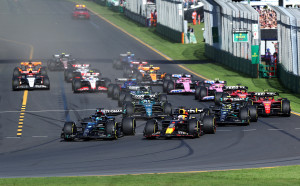
Lights out and Verstappen came straight across to cover off the advances of Russell, but his attempt was not successful. The reigning world champion did appear to exercise some caution with a slower exit from turn two. He seemed to be struggling.
Behind them, Leclerc had made a good start but Stroll was coming up close behind him. Leclerc turned into turn three but Stroll had taken the apex of the corner and tapped his rear right-hand side. Leclerc went for a spin and ended up in the gravel, ending his race prematurely.
At the same time, Verstappen leaves enough gap for Hamilton to be alongside him into turn three. It was a brave move from the seven-time world champion but he makes it through the inside of Verstappen. There were a few complaints on the radio but everything was deemed a lap one racing incident.
The safety car was deployed with a Mercedes one-two. On the restart, Russell made sure he pulled a gap to his teammate and the now-frustrated Verstappen. Everyone got a clean lap with Hamilton and Verstappen closing gradually on Russell. The driver from Kingslynn was on the radio asking if he is to defend against his teammate or preserve his tyres but he was answered when they called him into the pits for a new set of hard tyres. Russell came out in P7 on lap 6, but just one lap later it would prove to be the wrong decision.
Albon lit up the rear tyres into turns six and seven and spun straight into the barrier, projecting gravel all over the track. Albon was out and initially, the safety car was deployed. But the FIA needed time to get rid of the gravel on the track and brought out the red flag.
LAP 7/58
ALEX ALBON IS OUT OF THE RACE! ❌
It's all over for the Williams Racing driver at Turn 7 #AusGP #F1 pic.twitter.com/3oGMyiovrX
— Formula 1 (@F1) April 2, 2023
This gave everyone a free choice of tyres before the restart but was unfortunate timing for Russell. They rolled out on the formation lap before lining up on the grid for the restart. Russell was down in P7 with work to do while Hamilton was in P1 with Verstappen alongside.
Most drivers were on hard tyres so at the restart it was obvious they couldn’t get the immediate grip they wanted. Verstappen struggled again with the standing start but Alonso backed out of a move on the outside of turn one due to the lack of temperature in his tyres.
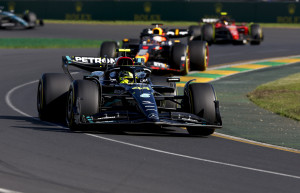
The lead for Hamilton wouldn’t last long though. On lap 12 Verstappen had DRS and a superior pace around the outside of Hamilton to take the lead of the race. Meanwhile, behind them, the other Mercedes made his way up into P4, past Gasly.
Sainz and Perez were also making their way through the pack. Sainz made turn three his new favourite overtaking spot but getting past Norris and then Tsunoda in consecutive laps. Perez used his extra pace to make it up to P13 before the next major incident.
Without warning, on lap 19, flames began to spit out the back of Russell’s car. Mercedes later suggested it was a power unit failure. However, Russell was able to safely stop at the end of the pitlane and get out of the car. This brought out a Virtual Safety Car and closed the pitlane. Therefore there were no changes of tyres for anyone and the race got back underway once the flames had been put out.
Perez continued his good form by making it into the points with a fantastic double move on Piastri and Tsunoda on lap 23. Piastri and Tsunoda had been battling for the majority of the race at this point, so when Piastri finally made the move on the Alpha Tauri on lap 29, the home crowd roared.
By lap 32 the race had settled into business as usual. Verstappen was setting consistent fastest laps, but Perez was able to make the most of DRS zones and get his name on the fastest lap board. Hamilton and Alonso then entered the fastest lap chat as they closed the gap to Verstappen.
At this point, the teams were considering a second stop due to potentially being on the hard tyres for 49 laps by the end of the race. The battle was mostly between Aston Martin and Mercedes trying to work out who would jump first.
However, their questions were answered when, in a strange incident, Magnussen lost his rear right tyre. It appeared that on the exit of turn two, he just went too wide and hit the wall, losing his tyre and bringing out another safety car, and eventually the red flag two laps later.
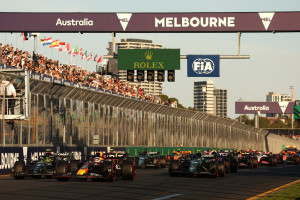
It was all set up then for a two-lap sprint to the finish with everyone changing to soft tyres. It would be another standing start as stipulated in the rules. As the cars lined up on the grid it looked as though Verstappen was very far forward in his box. He was however his wheels were still on the line and therefore in the box.
Absolute chaos ensued at the restart. Verstappen got away well with Hamilton hanging on the P2. Behind the Sainz had made a good start but he hit the rear of Alonso in front causing the Aston to spin on the exit of turn two.
Behind them, Gasly locked up into turn one and ended up across the grass before getting back on the track. As he arrived on the track he didn’t see the car of his teammate on the outside of turn two. Gasly veered back to the racing line but collided with Ocon pushing both into the wall and out of the race.
Perez also took a trip across the gravel but made it out safely, while at the back Sargent locked up into the back of De Vries. Both got stuck in the gravel and were out of the race. Unsurprisingly the red flag was deployed again but this led to some confusion about restarting for a fourth time.
🚩 RED FLAG 🚩
MULTIPLE CARS ARE OUT!!! #AusGP #F1 pic.twitter.com/zycwEEjlWs
— Formula 1 (@F1) April 2, 2023
With everyone back in the pitlane the clock was on lap 58 of 58, meaning only one racing lap left. Any laps behind the safety car count as racing laps so it appeared the race would finish behind the safety car, but the question was what order would the cars be in.
At the British Grand Prix in 2022, the red flag came out before the cars had made it through sector one so they went back to the last known order of the cars, the grid. This was a similar situation. The red flag came out before Verstappen made it to turn five, meaning they didn’t have any timings for drivers after the restart and would have to go back to the order from the grid on lap 57.
Once the crashed cars had been taken out of this grid order, it meant that Alonso was back up in P3 with Sainz in P4, Piastri in the points and Hulkenberg down in P8. This frustrated Haas as Hulkenberg was up in P4 after the carnage at the start. To rub salt in the wound for them, Sainz was given a five-second time penalty for causing a collision with Alonso.
After a re-shuffle of the cars in the pitlane, they headed out on the final lap. At the end, the safety car peeled off and Verstappen took the chequered flag with Hamilton in P2 and Alonso in P3. Sainz attempted to create a small gap but with the cars bunched up he dropped to the back of the pack and out of the points.
Only 12 cars finished the race and McLaren managed to capitalise on this with both cars getting points. Piastri was extremely happy to get his first points in F1 in his first home race and he gave plenty for the home fans to cheer about after a long race day.
We now wait until the end of April for the next race, but I imagine this won’t be the last we hear of the restart procedure for that time.
